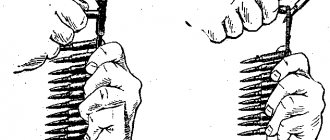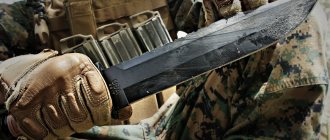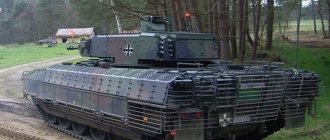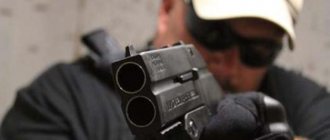Home » Real story » Little-known and unrealized projects of tanks and other armored vehicles » Why are our infantry fighting vehicles exactly like this? Part 1
Little-known and unrealized projects of tanks and other armored vehiclesControversial historyControversial history of the recent past
byakin 03/22/2019 3609
23
in Favoritesin Favoritesfrom Favorites 8
Editorial foreword: This year, the domestic media reported information about the possible return to service of the BMP-1 infantry fighting vehicles, which are being mothballed. It would seem that the history of these vehicles is already over, but now they have a chance to return to the Russian Army after modernization with the replacement of the standard weapons system with combat modules from the BTR-82A armored personnel carrier with a 30-mm 2A72 automatic cannon. This article will discuss the prerequisites for the appearance of infantry fighting vehicles in our country and the evolution of this class of armored vehicles up to the creation of a truly unique model - the BMP-1.
Modifications
BMP-2M Berezhok
BMP-2M "Berezhok" is a Russian modification of the BMP-2. An additional panoramic sight is installed. The location of the AGS-17 has been changed, 4 Kornet ATGM launchers have been installed. In 2005, a contract was signed with Algeria to modify 300 vehicles to the BMP-2M level.
BMP-2D
Developed in 1981 specifically for combat in Afghanistan. During the Afghan war, developers and the military suddenly learned that opponents were shooting not only in the forehead, but also at the side and rear of the infantry fighting vehicle, which was not expected in a combined arms battle (according to the experience of the Second World War), and the security of the sides was sacrificed in favor of the ability to overcome water obstacles on your own. The epiphany was costly, but as a result of the epiphany, the BMP-2D appeared during the fighting.
This is an infantry fighting vehicle - BMP-2D. This is the only modernization of the BMP-2 in 32 years of service. Many people who fought in Afghanistan remember this car with kind words. In fact, the BMP-2D is the vehicle that is needed to wage war. Yes, this vehicle lost the ability to swim, but the armor appeared (even if it was light and bulletproof) not only in the frontal projection and became circular. Unfortunately, the “armor” of the BMP-1/2, in its pure form, cannot boast of all-round bulletproof protection.
These photographs, for clarity, show the location of additional armor on the main body of the infantry fighting vehicle. Additional armor is not simply hung, but at some distance from the main armor of the hull. This distance is around 50 - 60 mm. This was done to improve bulletproof and anti-cumulative protection. In essence, this is classic shielding which led to an increase in the weight of the infantry fighting vehicle, but within reason. In the case of the BMP-2D, the weight of the vehicle has changed from the ceremonial model by 500 kg.
BMP-2 weighs 14,000 kg, and BMP-2D weighs 14,500+2% kg. As can already be seen from the very first photo, the sides of the vehicle have undergone increased armor protection.
And one of the weak points identified during combat operations in Afghanistan by Soviet troops in the BMP-1 and BMP-2 vehicles was the rear part of the turret, which was penetrated by small arms fire. On the BMP-2D this drawback was eliminated.
In addition, another weak point of the base BMP-1 and the BMP-2, which migrated from it to the BMP-2, was additionally strengthened - this is the bottom in the area of the driver and the gunner located behind him. On all BMP-2D vehicles, the bottom was additionally reinforced in this area.
PS 10 years after the withdrawal of troops from Afghanistan, not a single BMP-2D vehicle remained in the Russian army. One single copy stands in the armored tank museum in Kubinka.
BMP-2 with the Bakhcha-U combat module
Experimental modification of the BMP-2 with the Bakhcha-U combat module. Developed in 1999-2000. The modernization was done with the aim of increasing the combat power of the BMP-2 to the level of the BMP-3. However, due to the large volume of transported equipment, the landing party was reduced to 5 people, and due to the increased mass, the ability to swim was lost. In fact, the vehicle turned into a non-floating armored personnel carrier.
BMP-2 with Rostock combat module
BMP-2 with AGS-17 "Flame"
The BMP-2 modification differs from the base vehicle in the presence of the AG-17 “Plamya” grenade launcher. The grenade launcher is mounted at the rear of the turret. Guidance is carried out remotely by the operator-gunner or commander. The ammunition is in a box with a tape for 250 shots. Produced in a small series.
BMP-2K
Created to control motorized rifle units. The car has an additional short-wave radio station; for long-distance communication, a mast antenna is installed. Other characteristics are similar to the base car.
Foreign modifications
BVP-2 - BMP-2, produced under license in 1984-1987 in Czechoslovakia in Detva and ZTS in Dubnica nad Vahom. 344 copies were produced.
"Sarath" - BMP-2, produced under license in India
BMP-2 - modification of the BMP-2 for the Finnish Army
History of creation
The vehicle was created as a result of modification of the BMP-1. Work in this direction has been carried out at the design bureau of the Kurgan Machine-Building Plant since 1974 under the GBTU indices “Object 675” and “Object 680”. Also, the issue of modernizing the BMP-1 has been studied at the Chelyabinsk Tractor Plant since 1972 under the symbol “Object 769”. In 1980, a version of the Kurgan Machine-Building Plant was adopted, where mass production of the BMP-2 was launched.
Description of design
The crew of the vehicle consists of three people - a driver, an operator-gunner and a commander. The vehicle also carries a landing force of 7 people, who can fire through special embrasures from personal weapons.
Armored hull and turret
The hull and turret of the BMP-2 are welded from rolled steel armor plates with a thickness of 5 to 19 mm. The turret forehead is 23 mm thick.
In the left front part of the car there is a control compartment, in which there is a place for the driver with controls for the movement of the car, surveillance devices and a communications device. Behind the driver is the gunner's seat, equipped with an embrasure for firing personal weapons, as well as surveillance devices and communications equipment.
The engine and transmission compartment is located in the right front part of the machine, along the length of the machine it is combined with the control compartment and separated from it by a heat and sound insulating partition. For access to MTO units, there are hatches in the partition.
In the middle part of the vehicle there is a fighting compartment, which occupies the turret and the turret space of the hull. The fighting compartment contains the workstations of the operator-gunner and commander, as well as the main and auxiliary weapons. In the turret space there is a rotating floor in which boxes with machine gun cartridges are mounted, as well as a belt feeding system for the gun with armor-piercing tracer and fragmentation rounds. On the right side of the hull there are three stacks with ATGM rounds, another is located in the turret space.
In the troop compartment, located at the rear of the vehicle, there are 6 places for shooters. Each has an embrasure for firing from personal weapons. In the stern there are two doors for the landing. The left door has an embrasure for firing from a machine gun. Also, for dismounting troops when moving afloat or emergency evacuation, there are two hatches above the seats in the hull roof. The troop compartment is separated by a middle fuel tank and an electrical equipment container that contains batteries, a heater and other electrical units.
Armament
The main difference between the BMP-2 and the BMP-1 is the new weapon system. The reason for the replacement was the experience of using the BMP-1 weapons, which had difficulty coping with the task of hitting typical infantry targets, especially those with lying down or hidden enemy personnel. The fight against low-flying air targets and light armored personnel carriers was problematic, and due to the low power of ammunition, low accuracy and short range of the 2A28 gun, the fight against tank targets was not effective.
The main armament of the BMP-2 is a 30-mm 2A42 automatic cannon with 500 rounds of ammunition. Coaxed with the cannon is a 7.62 PKT machine gun, which has 2,000 rounds of ammunition. In addition, to combat tanks, the BMP-2 has a 9K111 “Fagot” or 9K111-1 “Konkurs” ATGM with 4 rounds.
The vehicle was also equipped with 6 grenade launchers of the 902B “Tucha” smoke screen system for firing 81-mm smoke grenades.
Surveillance and communications equipment
The driver's seat is equipped with surveillance devices and an A-3 tank intercom. The shooter's position behind him is equipped with TNP-165A and TNPO-170A surveillance devices. For communication there is an A-3 TPU device.
At night, the driver uses the TVN-2 device, which is installed immediately before leaving instead of the front triplex. The range and viewing angles of the TVN-2 are not large (in complete darkness), therefore, the driver cannot see what is on the sides of the vehicle; this is already the responsibility of the commander and gunner operator with a report via intercom. The equipment is included with the equipment, but is most often stored separately from the machine.
The commander and operator's workstations have observation and aiming devices. The commander's station is equipped with an R-123M radio station and an A-1 TPU apparatus. The operator has an A-2 TPU device for internal communication.
The gunners' workplaces in the troop compartment and the aft doors for dismounting are equipped with TNPO-170A devices for monitoring the terrain. For internal communications, the troop compartment uses A-3 and A-4 TPU devices. In the right door there is a radio station R-126.
For aiming, the gunner operator uses a combined sight (depending on the modification, either BPK-1-42 or BPK-2-42) with a 5.6-fold magnification during the day and 5-fold at night. To operate in active mode, an OU-5 illuminator is installed on the machine. In addition to the sight, the gunner has 3 periscope devices TNPO-170A with electrical heating, as well as 1 rear observation device TNPT-1. For the vehicle commander, two TNPO-170A and one TNPT-1 devices, a TKN-3B binocular viewing device and a 1PZ-3 day sight are installed for searching for air and ground targets and aiming weapons at them.
Engine and transmission
The engine and transmission compartment of the car is divided into two blocks. The first block is the power unit and combines the engine, planetary rotation mechanisms and gearbox. The second is a cooling and cleaning unit, which combines radiators for the cooling system, engine lubrication, ejector, air cleaner and transmission oil system.
The engine is a 6-cylinder 4-stroke uncompressor diesel UTD-20S1 liquid-cooled with direct injection. The maximum power is 210-221 kW. The total mass of the dry engine is about 700 kg.
The power unit is located at the very front of the vehicle, under the “ribbed” upper armor plate. It includes a transmission including gearbox, steering components, and clutch. All this, to one degree or another, can be repaired in the field, since there is direct access. The engine, located to the right of the driver, is completely closed and without special equipment, access to it is almost impossible. The only way to the engine is blocked by an armored plate above it, and without serious lifting equipment it is not worth even trying to make repairs. However, the designers clearly thought through this situation: if something happens to the engine, then the vehicle is not combat-ready and, therefore, requires major repairs, and this can only be properly carried out in a specialized place.
Engine repairs are not possible through the hatches in the internal partition; only routine maintenance is carried out through them. In addition, they are used in the cold season, when the engine has already warmed up, and the temperature in the cabin is not yet higher than outside, although the command “get to the cars!” has already arrived. This is where they save the day: the driver and the gunner sitting behind him receive the first portion of heat, then those sitting in the turret, and only then the troop compartment, with the condition that they travel for a long time and the rear doors do not open often. It should be noted that in general this compartment does not have much time to warm up, since the hatches close when a comfortable temperature for the driver is reached. After this, heating occurs due to partitions and forced heated air into the cabin.
Chassis
The base is a chassis with a six-wheel chassis; the design and characteristics are similar to the BMP-1. On rough terrain or a dirt road (if not similar to an asphalt road), the speed of movement is no more than 40-45 km/h.
The BMP series vehicles use a unique steering control, something between the steering wheel in an armored personnel carrier and the levers in tanks, this is the so-called “steering wheel”, consisting of only two horizontal handles. With the same freedom of rotation as the steering wheel, this allows you to control the car like a wheeled vehicle, with the only difference being that its angle of deflection has its own limitations. When you turn it to the side, there is a smooth, uniform redistribution of thrust on the tracks, this is what allows you to avoid jerking the car when turning, as usually happens with tracked vehicles, which ultimately has a detrimental effect on the rollers and tracks. After releasing it, the “steering wheel” itself returns to its original state. Consequently, force must be applied only when turning, and the horizontal position at this moment indicates that the car is moving in a straight line. Thanks to this design, the control of the machine is greatly facilitated and maneuvers such as a snake at speed are smoother.
Combat history
For the first time, “Berezhok” and other modifications of the infantry unit were shown to the public at a parade in November 1982. As of 1995, equipment was listed on the balance sheet of such states as:
- RF;
- Algeria;
- Afghanistan;
- Angola;
- Armenia;
- Azerbaijan;
- Belarus;
- Georgia;
- India;
- Ukraine;
- Czech Republic;
- Yemen;
- and about 14 other countries.
On the samples of the first releases, as well as on the experimental version No. 674, smoke grenade launchers were not installed, but a second machine gun was mounted on the roof of the hull near the senior gunner.
BMP-2 units of the Syrian Guard operating in the Damascus area
The equipment took the most active combat action in Afghanistan. However, in such conditions, the losses of the vehicle were horrific - 300,000 units, including models 1, 2, armored personnel carrier, BRDM. Additionally, it was used in hostilities between the formations of Armenia and Azerbaijan in the conflict over Nagorno-Karabakh from 1988 to 1994.
Later, the BMP took part in such military clashes as:
- Chechen war - in the first from 94 to 96, the second - from 99 to 09;
- Tajikistan - civil war from 1992 to 1997;
- in the conflict between South Ossetia and Georgia - 2008;
- south-eastern battles in Ukraine - starting in 14;
- military conflicts in Angola.
However, this is not the entire track record of the infantry vehicle - the war in Iraq also did not spare the BMP-2. Thus, according to some reports, due to the firing of an automatic cannon, the crew managed to disable 3 Abrams tanks. Over the past few years, the equipment has been successfully used by Syrian troops against militant groups.
For 2017-2018 BMPs in various modifications have been adopted in many countries, including the Russian Federation.
Performance characteristics of the BMP-2
Crew, persons: 3 Troops, persons: 7 Layout: engine compartment in front, combat compartment in the center, landing compartment in the rear
Weight of BMP-2
— 14.0 tons
Dimensions of BMP-2
— Case length, mm: 6735 — Case width, mm: 3150 — Height, mm: 2450 (according to the illuminator); 2250 (according to aiming devices) - Base, mm: 3600 - Track, mm: 2550 - Ground clearance, mm: 420
BMP-2 armor
— Armor type: rolled homogeneous steel (bulletproof, anti-fragmentation)
Armament of the BMP-2
— Caliber and brand of gun: 30 mm 2A42 — Type of gun: rifled small-caliber automatic gun — Gun ammunition: 500 (armor-piercing, high-explosive fragmentation) — Firing range, km: up to 4 on ground; up to 2.5 by air - Sights: BPK-2-42 (BPK-1-42) - binocular day and active-passive night and anti-aircraft 1PZ-3 - Machine guns: 1 × 7.62 mm PKT - Other weapons: ATGM 9K111 or 9K113
BMP-2 engine
— Engine type: UTD-20S1 — Engine power, l. s: 300
Speed of BMP-2
— Speed on the highway, km/h: 65 — Speed on rough terrain, km/h: 40–50 on dirt road; 7 afloat — Cruising range on the highway, km: 550—600 — Specific power, l. s./t: 20.3—21.74 — Specific ground pressure, kg/cm²: 0.64—0.66 — Elevation to be overcome, degrees: 35° — Wall to be overcome, m: 0.7 — Ditch to be overcome, m: 2.5 - Fordable, m: floating.
Booking
The TTZ requirements provided for protection of the vehicle from 23 mm armor-piercing shells from forward firing directions at a range of 500 meters, and protection all around from 7.62 mm armor-piercing bullets at a range of 75 meters. The frontal armor sheets of the BMP-1 hull located at large angles of inclination can withstand damage from fragments of field artillery shells, armor-piercing bullets from small arms and large-caliber 12.7 mm machine guns, the latter in a 60-degree firing sector from zero range. In most cases, frontal armor is not penetrated by ammunition from the 20 mm Oerlikon automatic cannon (formerly HS-820) at ranges greater than 100 meters. However, the quality of the armor depends significantly on the country of its origin. The side and rear armor and the roof of the hull and turret provide protection for the vehicle from 7.62 mm small arms bullets at zero range and from light artillery shell fragments, but do not protect against 12.7 mm machine gun fire at close range or from heavy shell fragments. Field tests, however, have shown that the aft doors, whose fuel tanks are filled with sand, can withstand damage from standard 12.7 mm bullets. During the fighting in Afghanistan and Chechnya, when firing from general purpose machine guns (PKT, M-60) at short ranges of about 30-50 m, 7.62 mm armor-piercing bullets in some cases pierced the rear doors and hatch covers of the BMP-1.
Criticism
Over the long period of operation of the BMP-1 and BMP-2, new “threats” to the protection of the vehicle repeatedly appeared. So at the end of the 1970s, after NATO adopted new 20x139 mm ammunition for the Hispano-Suiza HS 820, Rheinmetall RH 202 and M 693 (F2) guns with armor-piercing sub-caliber projectiles of the APDS type - DM 63 (Germany ) and OPTSOC (France), the ground forces of these states now have the opportunity to hit the BMP-1 in the frontal projection from ranges of 800-1000 m. Ammunition for the M242 Bushmaster gun, the main US M2 Bradley infantry fighting vehicle, adopted in 1982, was designed based on damage to the armor protection of the BMP-1, providing armor penetration of 28 mm/60 deg/1500 m. During the First Gulf War, the armor protection of the BMP-1 and BMP-2 vehicles turned out to be vulnerable to armor-piercing sub-caliber projectiles of 25-mm automatic guns. According to test data conducted in the USA, the armor of the BMP-1 and BMP-2 is damaged by the M791 armor-piercing sabot projectile (BPS with compartment) of the 25-mm M242 Bushmaster cannon at ranges of 1500-2000 m. However, any large-scale modernization of the vehicles there have been no plans to improve their security over the past decades.
The experience of the Arab-Israeli war of 1973 and the USSR war in Afghanistan showed that the armored hull of the BMP-1 cannot withstand hits from 12.7 mm bullets into the side projection of the vehicle, and a hit from an anti-tank grenade, as a rule, caused the vehicle to ignite with a subsequent explosion of ammunition.
Defense and weapons
The BMP-1's armament includes a 73-mm 2A28 "Grom" smoothbore gun, a 7.62-mm PKT coaxial machine gun and a 9M14M "Malyutka" anti-tank guided missile system; the 9K32 "Strela-2" anti-aircraft missile system is also attached and transported in the troop compartment.
The armored hull of the BMP-1 is welded, made of high-hardness rolled steel armor. In the upper frontal part there is a large hatch, closed with a folding ribbed armor plate made of aluminum alloy, providing access to the engine. Conical tower. To protect against penetrating radiation from a nuclear explosion, an anti-radiation lining is used. Due to the low rise of the barrel in Afghanistan, the crews themselves strengthened the AGS-17 “Flame” on the turret, which improved the combat properties of the vehicle in mountain conditions.










